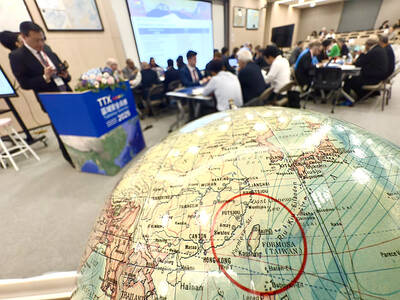A long-range strike exercise held by the US Strategic Command earlier this month may have been intended as a practice run for a future contingency involving China, military analysts have said.
The exercise, codenamed Operation Chimichanga, was held at the US military’s Joint Pacific Alaska Range Complex near Eilson Air Force Base, Alaska, and involved a variety of combat aircraft and bombers, including F-22 Raptor stealth fighters, B-1 bombers, E-3 Sentry airborne warning and control system (AWACS) and KC-135 Stratotankers air-refueling aircraft.
US Air Force F-16s from Misawa Air Base in northern Japan also took part in the exercise.
Other than a short press release detailing the type of aircraft and weapons used during the exercise, the US Air Force has remained relatively low-key on the matter and did not refer to any specific contingency or scenario.
Major Scott Lanis, 168th Operations Group chief of scheduling, said the more than 168,000km2 of airspace at the complex provided a diverse training environment that allowed pilots to train realistically and jointly in situations similar to those they would face in combat.
The exercise allowed different aircraft to work together in a simulated strike environment, to practice interoperability while simultaneously traveling long distances and receiving air-refueling support, a notice on the exercise said.
This was also the first time that increment 3.1, a recent F-22 hardware and software upgrade that provides the F-22 with the means to find and engage ground targets, was used in a large force employment exercise.
The exercise on April 4 involved launches of a combination of real and computer-simulated weapons at mock targets scattered across the Joint Pacific Alaska Range.
Although the nation-wide joint exercise was officially aimed at validating the long-range capabilities of the B-1s and the ability of F-22s and F-16s to escort them into an anti-access target area, military analysts have speculated that it was also aimed at validating evolving US Air Force tactics and concepts for military operations against either China in the Pacific theater of operations, or possibly North Korea.
One of the main focuses of Chinese military modernization in recent years has been anti-access/area-denial capabilities to delay or prevent US forces from intervening in an armed conflict over Taiwan.
In addition to the Dong Feng-21D anti-ship missile currently under development, China has erected an impressive network of surface-to-air missiles to counter enemy aircraft, mostly through acquisitions from Russia.
Meanwhile, the joint Maritime Cooperation Sino-Russian naval exercises in the Yellow Sea entered their second day yesterday. In all, 25 naval vessels, 13 aircraft, nine helicopters and two special -fighting groups are taking part in the exercise, the largest in years. The People’s Liberation Army Navy has deployed missile destroyers, missile frigates, missile boats, a support vessel and a hospital ship for the exercises, which are scheduled to finish on Friday.
Chinese submarines will reportedly act as an opposing force attacking the joint fleet as part of anti-submarine warfare exercises.
While the Russian Navy’s cruiser Varyag is participating in the exercise off Shandong Province, China’s own refurbished Varyag aircraft carrier embarked on its fifth sea trial on Friday, though it is not expected to participate in the joint exercises with Russia.

DEFENSE: The National Security Bureau promised to expand communication and intelligence cooperation with global partners and enhance its strategic analytical skills China has not only increased military exercises and “gray zone” tactics against Taiwan this year, but also continues to recruit military personnel for espionage, the National Security Bureau (NSB) said yesterday in a report to the Legislative Yuan. The bureau submitted the report ahead of NSB Director-General Tsai Ming-yen’s (蔡明彥) appearance before the Foreign and National Defense Committee today. Last year, the Chinese People’s Liberation Army (PLA) conducted “Joint Sword-2024A and B” military exercises targeting Taiwan and carried out 40 combat readiness patrols, the bureau said. In addition, Chinese military aircraft entered Taiwan’s airspace 3,070 times last year, up about

A magnitude 4.3 earthquake struck eastern Taiwan's Hualien County at 8:31am today, according to the Central Weather Administration (CWA). The epicenter of the temblor was located in Hualien County, about 70.3 kilometers south southwest of Hualien County Hall, at a depth of 23.2km, according to the administration. There were no immediate reports of damage resulting from the quake. The earthquake's intensity, which gauges the actual effect of a temblor, was highest in Taitung County, where it measured 3 on Taiwan's 7-tier intensity scale. The quake also measured an intensity of 2 in Hualien and Nantou counties, the CWA said.

The Overseas Community Affairs Council (OCAC) yesterday announced a fundraising campaign to support survivors of the magnitude 7.7 earthquake that struck Myanmar on March 28, with two prayer events scheduled in Taipei and Taichung later this week. “While initial rescue operations have concluded [in Myanmar], many survivors are now facing increasingly difficult living conditions,” OCAC Minister Hsu Chia-ching (徐佳青) told a news conference in Taipei. The fundraising campaign, which runs through May 31, is focused on supporting the reconstruction of damaged overseas compatriot schools, assisting students from Myanmar in Taiwan, and providing essential items, such as drinking water, food and medical supplies,

New Party Deputy Secretary-General You Chih-pin (游智彬) this morning went to the National Immigration Agency (NIA) to “turn himself in” after being notified that he had failed to provide proof of having renounced his Chinese household registration. He was one of more than 10,000 naturalized Taiwanese citizens from China who were informed by the NIA that their Taiwanese citizenship might be revoked if they fail to provide the proof in three months, people familiar with the matter said. You said he has proof that he had renounced his Chinese household registration and demanded the NIA provide proof that he still had Chinese